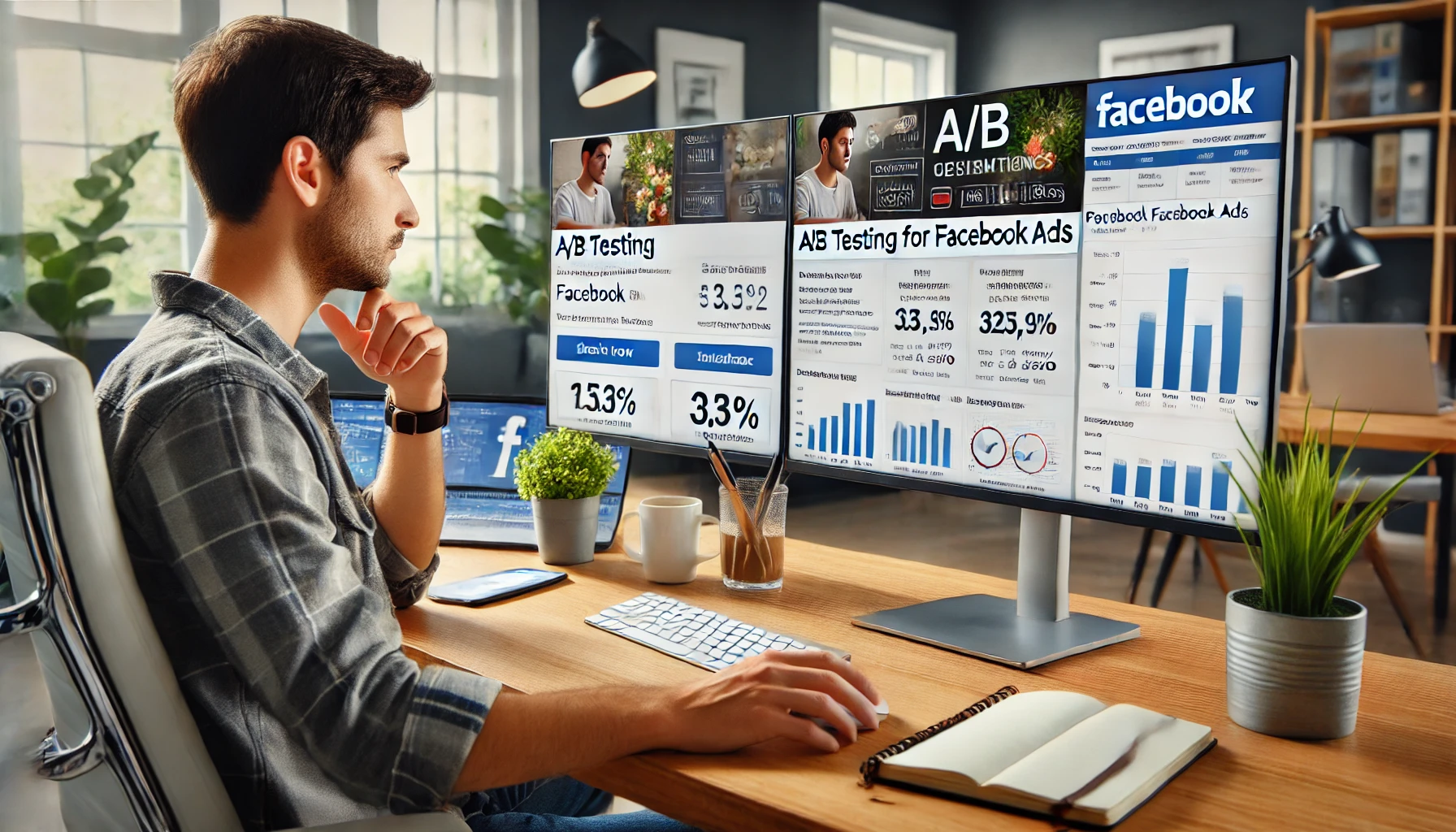Facebook Ads can be a powerful tool for businesses, but success depends on continuous testing and optimization. One of the most effective ways to refine your campaigns and improve performance is through A/B testing (also called split testing).
A/B testing allows you to compare different versions of an ad to see which performs best. By testing variables like ad copy, images, audience targeting, and call-to-action (CTA) buttons, you can increase conversions, reduce ad costs, and maximize ROI.
In this guide, you’ll learn how to run effective A/B tests and apply the results to improve your Facebook Ads performance.
1. What is A/B Testing in Facebook Ads?
A/B testing is a method where you test two or more variations of an ad to see which one delivers better results. Facebook automatically distributes your budget between the different versions and determines the winner based on performance metrics.
Why is A/B Testing Important?
✔ Reduces wasted ad spend by identifying underperforming elements.
✔ Improves CTR (Click-Through Rate) by testing different messaging and visuals.
✔ Optimizes CPA (Cost Per Acquisition) by finding the most effective audience and creative combinations.
✔ Provides data-driven insights to guide future ad strategies.
2. What Elements Can You A/B Test?
To run an effective A/B test, you need to decide which variable to test. Here are some key elements you can experiment with:
A. Ad Creatives
🎨 Images vs. Videos: Test whether static images or video ads generate better engagement.
🎨 Different Image Styles: Compare bright vs. dark colors, real-life photos vs. illustrations.
🎨 Ad Format: Single image, carousel, and slideshow ads often perform differently.
B. Ad Copy & Messaging
✍ Headline Variations: Test different styles, such as curiosity-driven vs. benefit-driven headlines.
✍ Tone of Voice: Try formal vs. casual language to see what resonates with your audience.
✍ Length of Text: Some audiences respond better to short, direct messages, while others engage more with detailed storytelling.
C. Audience Targeting
🎯 Broad vs. Narrow Targeting: Compare a highly specific audience vs. a larger one.
🎯 Lookalike Audiences: Test 1% vs. 5% Lookalike Audiences to see which converts better.
🎯 Demographics & Interests: Experiment with different age groups, locations, and interests.
D. Call-to-Action (CTA) Buttons
🚀 Different CTAs: “Shop Now” vs. “Learn More” vs. “Sign Up.”
🚀 CTA Placement: Compare placing CTAs within the image vs. relying on Facebook’s button.
E. Bidding Strategies
💰 Automatic vs. Manual Bidding: See which approach lowers CPA while maintaining conversions.
💰 Different Budget Levels: Compare how increasing or decreasing your budget affects performance.
3. How to Set Up an A/B Test in Facebook Ads Manager
Facebook makes it easy to set up A/B tests directly in Ads Manager. Here’s a step-by-step guide:
Step 1: Create a New A/B Test
- Go to Facebook Ads Manager and click “Create” to start a new campaign.
- Choose a campaign objective (e.g., traffic, conversions, lead generation).
- In the ad setup phase, select the “A/B Test” option.
Step 2: Select Your Testing Variable
- Choose one element to test (e.g., audience, ad copy, image, or bidding strategy).
- Facebook will automatically create a duplicate version of your ad with the chosen variation.
Step 3: Set Your Budget & Schedule
- Allocate a budget that allows enough data collection (Facebook recommends at least $100 per test).
- Run the test for at least 7 days to gather enough data.
Step 4: Monitor Performance Metrics
Track key performance indicators (KPIs) like:
📊 CTR (Click-Through Rate) – Measures engagement with your ad.
📊 CPA (Cost Per Acquisition) – Shows how much you’re paying per conversion.
📊 ROAS (Return on Ad Spend) – Determines if your ads are profitable.
Step 5: Analyze Results and Apply Insights
- Once the test ends, identify the winning ad based on your chosen metric.
- Apply the successful elements to future campaigns.
- Repeat the process with new variables for continuous improvement.
4. Best Practices for Successful A/B Testing
✅ Test One Variable at a Time
- Changing too many elements at once makes it difficult to identify what caused the difference in performance.
✅ Give the Test Enough Time to Run
- Don’t stop the test too soon—Facebook’s algorithm needs time to optimize.
✅ Ensure a Large Enough Sample Size
- If your audience is too small, results may not be statistically significant.
✅ Avoid Overlapping Audiences
- If you’re testing audience targeting, make sure Facebook doesn’t show both variations to the same people.
✅ Keep Testing and Refining
- Even after finding a winning ad, continue testing to further optimize performance.
5. Common A/B Testing Mistakes to Avoid
🚫 Testing too many variables at once – This makes it impossible to determine what’s working.
🚫 Not letting the test run long enough – Cutting a test too early leads to inaccurate results.
🚫 Ignoring statistical significance – Ensure results are based on a significant data sample.
🚫 Failing to apply learnings – Always implement insights from successful tests into future campaigns.
Final Thoughts
A/B testing is essential for optimizing Facebook Ads and achieving better results. By continuously testing different ad elements, audience segments, and bidding strategies, you can lower costs, increase conversions, and improve ROI.
Start implementing A/B testing today, and watch your Facebook Ads perform better than ever! 🚀
